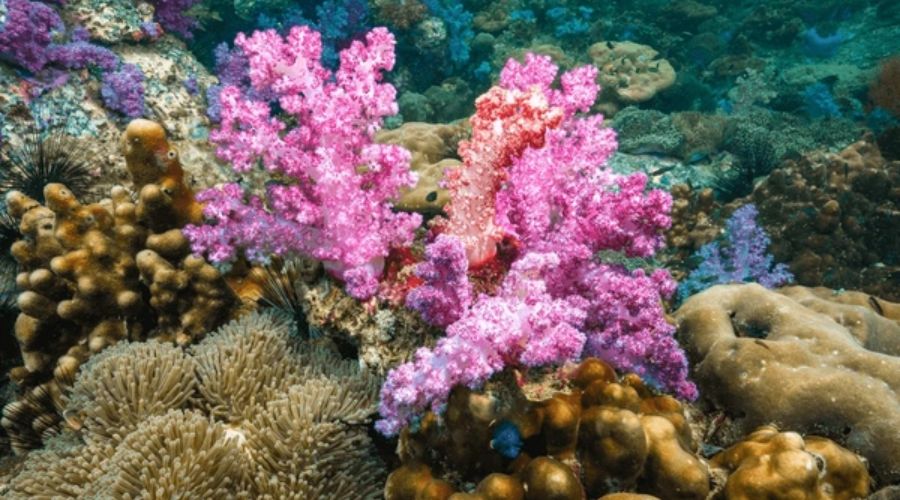The Andaman Islands are famous for their beautiful nature, clean beaches, and rich marine life. One special thing about these islands is the coral reefs that really catch people’s attention with their bright colors and many different kinds of sea creatures. The underwater world around these corals is very attractive to visitors because it looks so amazing and full of life. In this blog, we will look closely into the interesting world of coral reefs in Andaman. We explore why they are important, what problems they have, and what actions people take to save these valuable ecosystems.
Suggested Read: Travel tips for Andaman and Fairs and Festivals in Andaman
Introduction to the Coral reefs in Andaman
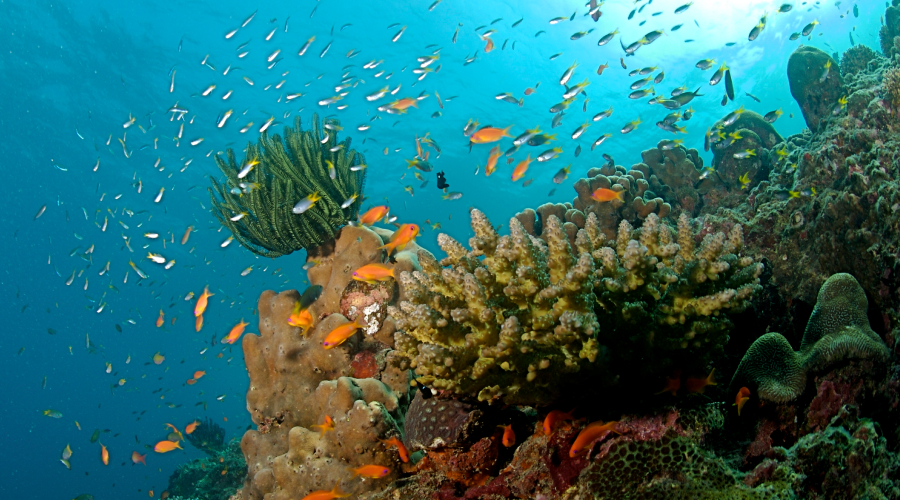
The coral reefs in Andaman are included in the bigger Indian Ocean coral reef system and are thought to be some of the clearest and most varied globally. These reefs host a surprising number of marine life, having more than 500 kinds of hard and soft corals, over 1,000 types of fish, as well as many different invertebrates. The very clear waters around Andaman Islands make perfect conditions for growing and making these underwater beautiful places.
The coral reefs in Andaman are mainly fringing reefs. This means they grow very near to the shore and create a border around the islands. Some of the most famous coral reefs in Andaman are found close to Havelock Island, Neil Island, and North Bay Island. These reefs are not just beautiful to see but also very important for keeping the marine ecosystem in balance.
Exploring the Different Coral reefs in Andaman
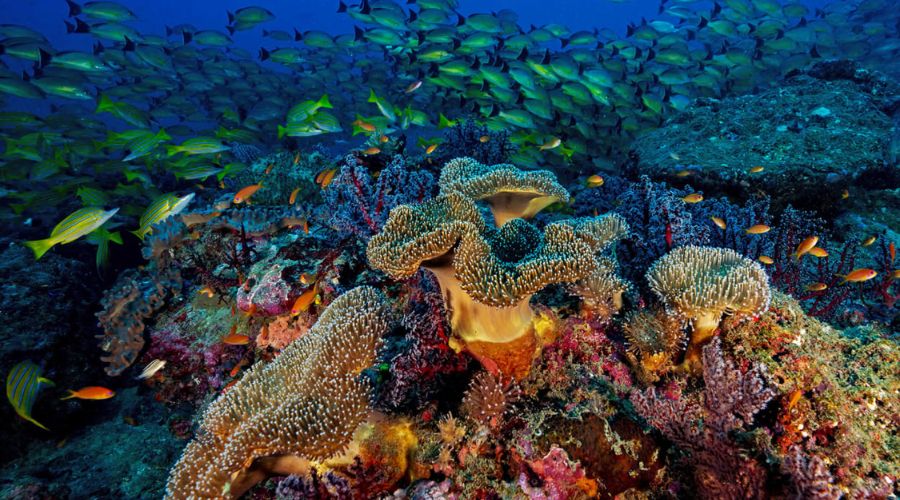
The Andaman Islands have many beautiful coral reefs, and each one is special in its own way. Let us see some of the most amazing coral reefs in Andaman more closely.
1. Havelock Island
Havelock Island, also called Swaraj Dweep, has some of the most amazing coral reefs in Andaman. Elephant Beach on this island is a dream place for snorkelers because it has shallow waters and colorful coral gardens. The reef in this place has many vibrant fish, such as parrotfish, angelfish, and clownfish. Another famous area is Nemo Reef, which got its name from the clownfish character in the movie “Finding Nemo.” This reef is famous for its many different coral shapes and is loved by people who dive.
2. Neil Island
Neil Island, also called Shaheed Dweep, is another beautiful place in the Andaman group of islands. The island’s Bharatpur Beach and Laxmanpur Beach are famous for their stunning coral reefs. The reefs in this place have very clear waters and many kinds of sea creatures. People who like to snorkel or dive can see different types of corals, such as brain corals, staghorn corals, and table corals. The reefs close to Neil Island have many kinds of turtles, like the hawksbill and green sea turtles.
3. North Bay Island
North Bay Island, located close to Port Blair, is a famous spot for people who love coral reefs. The island has shallow waters that are perfect for snorkeling, where you can see lots of beautiful coral gardens ready for exploring. The reef here is famous for having many different coral types, like boulder corals, mushroom corals, and soft corals. People who visit can also see lots of sea creatures such as butterflyfish, surgeonfish, and giant clams.
4. Jolly Buoy Island
Jolly Buoy Island, found in the Mahatma Gandhi Marine National Park, is a place you have to see if you love coral reefs. The only way to get there is by boat. The island is famous for its very clear water and colorful coral reefs. The reefs here have many types of hard and soft corals, along with many different kinds of fish. People who snorkel or dive can also see sea anemones, big moray eels, and sometimes even a reef shark.
5. Red Skin Island
Red Skin Island, located south of Havelock Island, is a secret treasure among the coral reefs in Andaman. The island’s name comes from the red color of its beach sand. The coral reefs near Red Skin Island are famous because of their special shapes and bright colors. The shallow water areas around the island are great for snorkeling, and the deeper parts have thrilling places to dive. Visitors can spot a variety of marine life, including lionfish, stingrays, and octopuses.
These are just some examples of the amazing coral reefs in Andaman. Every reef gives a different adventure, with its own special things to be found and enjoyed. Whether you are a skilled diver or just starting with snorkeling, the coral reefs in Andaman offer an adventure below the water that is hard to forget.
Significance of Coral reefs in Andaman
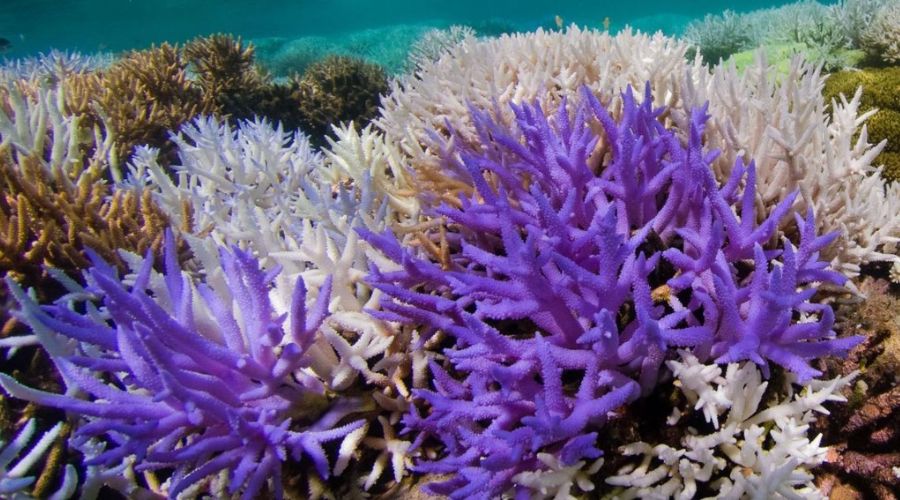
The coral reefs in Andaman are not only beautiful to look at; they also play many important roles that help the environment and local people.
1. Biodiversity Hotspots
Coral reefs in Andaman are one of the most diverse ecosystems on Earth. They offer a home to many different marine species, and some of these animals cannot be found in other places around the world. The complicated build of the reefs gives protection, food, and places to breed for many fish, crustaceans, mollusks, and other living things. This high variety in life not just helps these species to survive but also keeps the gentle balance of the sea environment stable.
2. Coastal Protection
The coral reefs in Andaman work like natural walls, guarding the coastlines from strong waves and storms. These reefs take in wave energy, which helps to lessen erosion and lower the damage caused by natural disasters on the islands. This protection is very important for the low-lying places in Andaman Islands. These areas are at risk because sea levels are rising and weather events can be very extreme there.
3. Economic Benefits
The coral reefs in Andaman give big help to the local money situation through activities like tourism and fishing. The very pretty look of these reefs bring many visitors every year, who come for snorkeling, diving, and seeing the underwater world. This tourism business brings money to local people, giving jobs and helping small shops. Also, the coral reefs are like baby fish homes for many important types of fish that can be sold in markets. This makes sure there is always enough seafood for both the locals to eat and also sell outside their country.
Threats to Coral reefs in Andaman
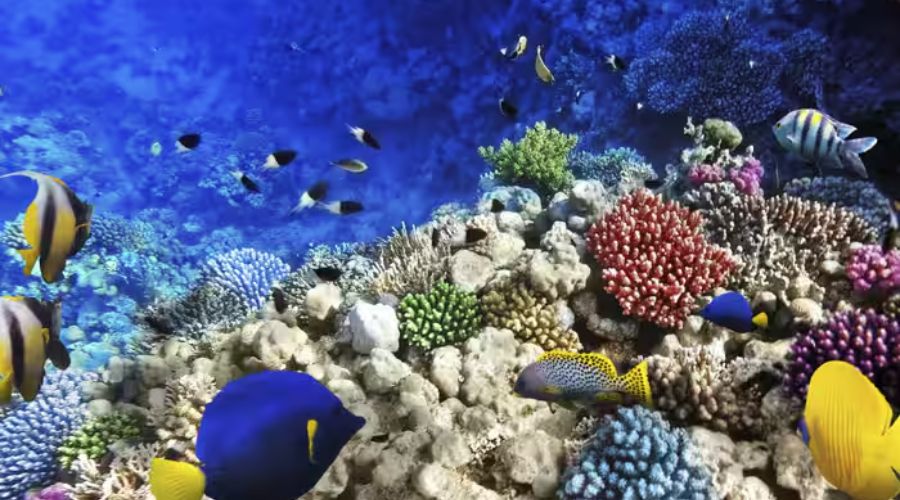
Although they are very important, coral reefs in Andaman confront many dangers that could put their existence at risk. Some of the biggest problems are:
1. Climate Change
Warmth of sea, which happens due to worldwide climate change, is a big danger for coral reefs in Andaman. When water gets too hot and crosses the limit, corals will expel algae that live with them in a mutual relationship. This process can result in coral bleaching. If this bleaching continues for long periods, it may cause death of the corals leading to collapse of the entire reef ecosystem. In the Andaman Islands, there have been many instances of bleaching occurring in recent years. These incidents emphasize the importance of dealing with climate change immediately.
2. Pollution
Coral reefs in Andaman are also under serious danger from pollution. Different types of pollution like sewage, agricultural waste and plastic can cover the corals, stop sunlight and disturb the delicate balance within their ecosystem. The growth in population as well as development pressures on Andaman Islands has worsened this problem of pollution. It is very important to apply good waste management methods and control actions for fighting against pollution effects on these coral reefs.
3. Destructive Fishing Practices
Certain fishing methods like dynamite and cyanide can severely harm the coral reefs in Andaman. These techniques annihilate not just the intended fish, but also demolish coral formations and homes for many other types of creatures. Additionally, excessive fishing activities and non-selective fishing tools may cause disturbances to the ecological equilibrium of these reefs, resulting in reduction of main species as well as deterioration on broader ecosystem levels.
4. Unregulated Tourism
In the Andaman Islands, tourism plays a big role in boosting the economy. But, reckless and uncontrolled tourist activities may cause damage to coral reefs. Actions like using reefs to anchor boats, walking on corals when snorkeling or diving and picking up coral as souvenirs can directly harm the physical structure of these underwater environments. The rise in the number of humans visiting and developing facilities for tourism could also result in pollution from sewage and other waste products along with sedimentation effects on reef ecosystems.
Conservation Efforts for Coral reefs in Andaman
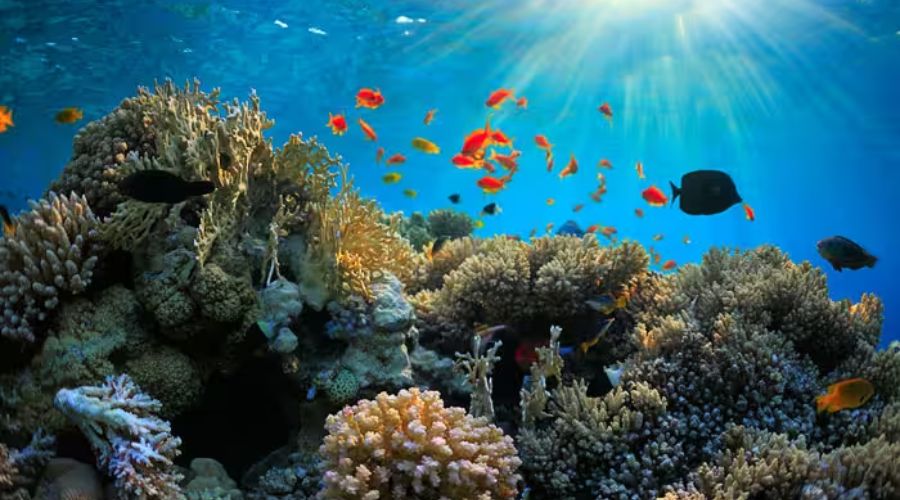
Corroborating the significance of coral reefs in Andaman, it is now clear that they are not only crucial for marine biodiversity but also contribute greatly to local communities and tourism. As a result, multiple actions have been initiated to safeguard and enhance these valuable ecosystems.
1. Marine Protected Areas
In Andaman, a main method to safeguard coral reefs is by creating marine protected areas (MPAs). These include the Mahatma Gandhi Marine National Park and Rani Jhansi Marine National Park. They bring legal safety to reefs and manage human actions within their boundaries. Such spaces act like sanctuaries for sea life, letting reefs revive and prosper without strains from fishing, tourism or other human effects.
2. Coral Restoration Projects
In the Andaman Islands, many groups and places that do research participate in coral restoration projects. These activities focus on recovering reefs which have been harmed by moving coral pieces to fake structures or real surfaces. The goal is to speed up the healing of damaged reefs by making new groups of corals and encouraging existing ones to grow more. This also boosts their ability to handle upcoming problems.
3. Community Involvement
To keep coral reefs in Andaman protected for a long time, it is very important to involve nearby communities. They are running programs on education and awareness to inform people about the value of these reefs and why they should use methods that can be kept up sustainably. Conservation efforts focused in community areas, like creating LMMAs (locally managed marine areas), give power to local groups for safeguarding their sea resources and handling them better.
4. Sustainable Tourism Practices
Another important thing to save the coral reefs in Andaman is promoting sustainable tourism. This can be done by creating rules for correct reef tourism, like controlling how many tourists visit a place, making sure waste is managed properly, and encouraging activities that are friendly to the environment. If we work with the tourism industry and inspire them to use good methods, we can lessen how much effect there is from tourists on these reefs while still giving people a chance of seeing their underwater beauty.
Conclusive Words
The coral reefs in Andaman are home to a rich variety of living things, they make up an important part of the sea’s system and provide income for people who live nearby. But human-made dangers like pollution from land, climate change effects such as rising water temperature and acidity levels along with other problems such as fishing that damages habitats or uncontrolled tourism are putting extreme stress on these delicate ecosystems. It becomes very necessary for us to quickly take steps safeguarding and nurturing the coral reefs in Andaman not only because they hold their own worth but also due to numerous advantages that nature and humans gain from it.
Through the creation of marine protected areas, backing coral restoration efforts, getting local communities involved, and encouraging sustainable tourism methods we can help save coral reefs in Andaman. We all share the obligation to take care of these valuable environments and keep them fascinating and motivating for coming times. While we appreciate the attractiveness of coral reefs in Andaman, let’s also promise to protect them so these underwater marvels stay as proof for nature’s toughness and grandeur.


